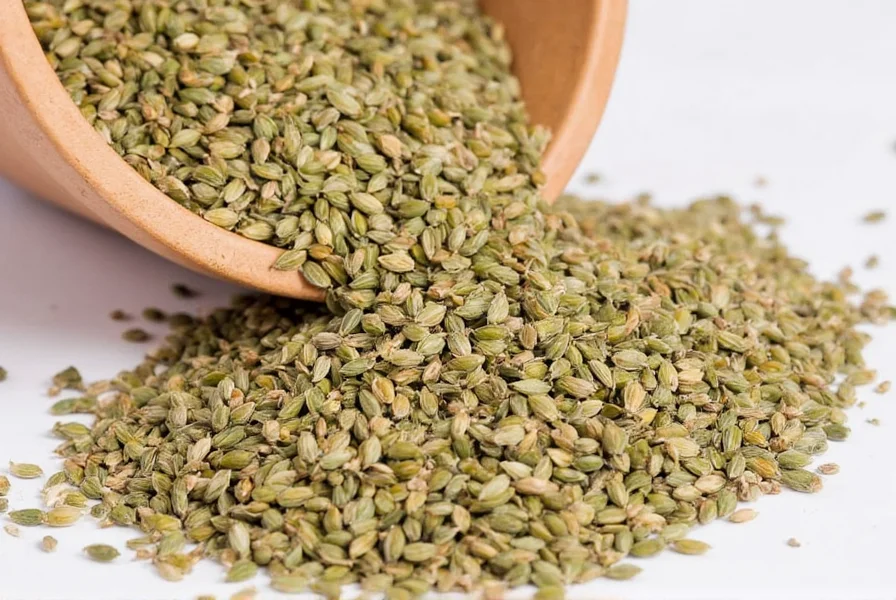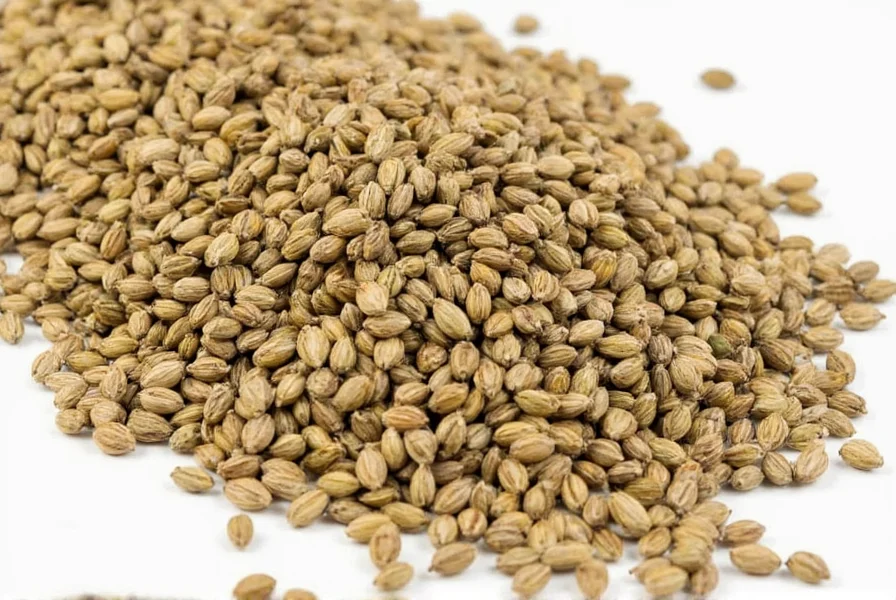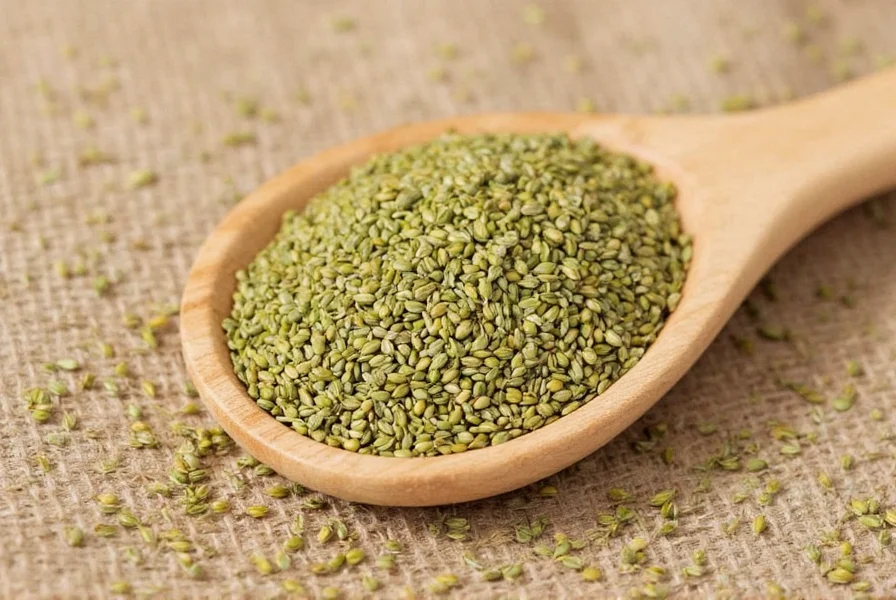Fennel seeds, scientifically known as Foeniculum vulgare seeds, represent one of the oldest cultivated herbs with documented use dating back to ancient Egyptian and Roman civilizations. These tiny crescent-shaped seeds measure approximately 4-8mm in length and transition from green to yellow-brown as they mature. Unlike many spices that lose potency over time, properly stored fennel seeds maintain their aromatic compounds for up to two years, making them a valuable pantry staple for home cooks and professional chefs alike.
Botanical Background and Historical Significance
The fennel plant is a hardy perennial herb that can grow up to 2.5 meters tall, featuring feathery leaves and yellow flowers arranged in umbrella-like clusters called umbels. Native to the Mediterranean region, fennel has naturalized throughout much of Europe, Asia, and North America. Historical records show that ancient Greeks considered fennel sacred, believing it contributed to courage and strength. Roman soldiers consumed fennel seeds before battle for endurance, while medieval Europeans hung fennel above doorways to ward off evil spirits.
Physical Characteristics and Flavor Profile
Fennel seeds possess several distinctive characteristics that set them apart from similar spices:
| Characteristic | Description |
|---|---|
| Color | Green when immature, turning yellow-brown when mature |
| Shape | Crescent-shaped with five longitudinal ridges |
| Size | 4-8mm in length, 1-2mm in width |
| Flavor | Sweet, aromatic with pronounced anethole (licorice-like) notes |
| Aroma | Warm, sweet, slightly peppery with herbal undertones |
What do fennel seeds taste like? They deliver a complex flavor profile that begins with a sweet, licorice-like note followed by subtle hints of citrus and herbaceous undertones. When crushed or chewed, they release essential oils containing anethole (80-90%), which creates their signature flavor. Unlike anise seeds, which share similar compounds, fennel seeds offer a more nuanced, less intense licorice flavor with additional herbal complexity.

Culinary Applications Across Global Cuisines
Understanding what are fennel seeds used for reveals their remarkable versatility in cooking. Indian cuisine incorporates them whole in spice blends like panch phoron and in digestive after-dinner mixes called mukhwas. Italian sausage recipes rely on fennel seeds for their characteristic flavor, while Scandinavian breads and Scandinavian aquavit feature them prominently. Chinese five-spice powder often includes fennel seeds alongside star anise, cloves, cinnamon, and Szechuan pepper.
Chefs recommend toasting fennel seeds before grinding to enhance their aromatic compounds. When substituting in recipes, use a 1:1 ratio for crushed seeds versus ground, though whole seeds provide more intense flavor when used in slow-cooked dishes. For those exploring how to use fennel seeds in cooking, try adding them to tomato-based sauces, roasted vegetables, or even fruit compotes for a surprising flavor dimension.
Nutritional Composition and Health Benefits
Fennel seeds nutrition facts reveal a nutrient-dense profile. Just one tablespoon (6g) contains approximately:
- 20 calories
- 1g protein
- 1g fat
- 3g carbohydrates
- 2g dietary fiber
- 10% of the daily value for calcium
- 6% of the daily value for iron
Research suggests fennel seeds benefits extend beyond basic nutrition. The compound anethole demonstrates potential anti-inflammatory properties, while dietary fiber supports digestive health. Studies published in the Journal of Food Science and Technology indicate fennel seeds may help reduce symptoms of irritable bowel syndrome when consumed as tea. However, it's important to note that while fennel seeds health benefits show promise, they should complement rather than replace medical treatment for specific conditions.
Distinguishing Fennel Seeds from Similar Spices
Many people confuse fennel seeds vs anise seeds due to their similar flavor profiles. While both contain anethole, they come from different plant families. Fennel (Foeniculum vulgare) belongs to the Apiaceae family, while anise (Pimpinella anisum) is a separate species. Visually, fennel seeds are longer and more curved than the smaller, straighter anise seeds. Star anise, another common confusion point, comes from an entirely different plant (Illicium verum) native to China and has a stronger, more intense flavor.

Storage and Preparation Techniques
To maximize shelf life and flavor retention, store fennel seeds in an airtight container away from light and heat. Whole seeds maintain potency for 1-2 years, while ground fennel loses flavor within 6 months. For optimal flavor extraction, lightly toast seeds in a dry skillet over medium heat for 2-3 minutes until fragrant, then grind as needed. When substituting in recipes requiring ground fennel, use 1 teaspoon of ground fennel for every 1.5 teaspoons of whole seeds.
For those wondering where to buy fennel seeds, they're widely available in most grocery stores, spice shops, and online retailers. Look for plump, aromatic seeds with a vibrant greenish hue, avoiding any that appear dull or emit a musty odor, which indicates age or improper storage.
Common Questions About Fennel Seeds
What are the primary differences between fennel seeds and anise seeds?
Fennel seeds come from the Foeniculum vulgare plant and are longer, curved seeds with a milder, sweeter licorice flavor. Anise seeds (Pimpinella anisum) are smaller, straighter seeds with a more intense, sharper licorice taste. Though both contain anethole, they belong to different plant species and have distinct botanical classifications.
Can fennel seeds help with digestion?
Yes, fennel seeds have been traditionally used to support digestive health. The dietary fiber and compounds like anethole may help relax gastrointestinal muscles and reduce bloating. Many cultures consume fennel seeds after meals as a digestive aid, and some studies suggest they may help alleviate symptoms of irritable bowel syndrome when consumed as tea.
How should I store fennel seeds to maintain freshness?
Store fennel seeds in an airtight container away from light, heat, and moisture. Whole seeds maintain their flavor and potency for 1-2 years when properly stored, while ground fennel loses its aromatic compounds more quickly, typically within 6 months. For extended storage, keep them in the refrigerator or freezer to preserve their essential oils.
Are fennel seeds safe for everyone to consume?
Fennel seeds are generally safe for most people when consumed in culinary amounts. However, individuals with estrogen-sensitive conditions should consult a healthcare provider before consuming large quantities, as fennel contains compounds with mild estrogenic effects. Those with known allergies to plants in the Apiaceae family (carrots, celery, parsley) may experience cross-reactivity.
What's the best way to use fennel seeds in cooking?
For maximum flavor, lightly toast whole fennel seeds in a dry skillet for 2-3 minutes until fragrant, then grind as needed. They work well in spice rubs for meats, added to bread dough, infused in liquids for poaching, or sprinkled over roasted vegetables. In Indian cuisine, they're often used whole in tempering oils, while Mediterranean recipes frequently incorporate them into sausage blends and tomato sauces.











 浙公网安备
33010002000092号
浙公网安备
33010002000092号 浙B2-20120091-4
浙B2-20120091-4